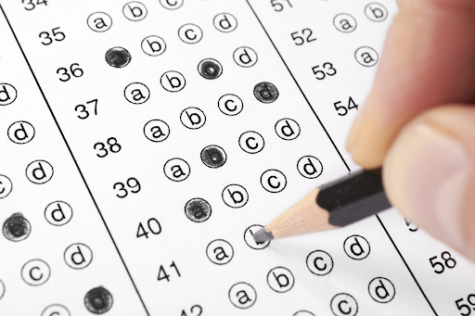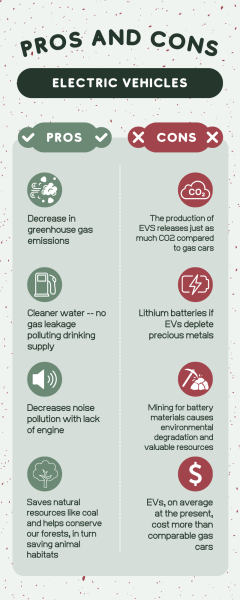The SAT and ACT: Unaffordable and a Hindrance to Higher Education for Many
 In the past year, colleges and universities have become increasingly test optional, no longer requiring SAT or ACT test scores to consider an applicant. In fact, nearly 80% of colleges and universities, public and private, will not require test scores in applications for fall 2023. This is welcome news, as these tests have been at the face of criticism over inadequacies in academic assessment for years. Yet, the damage that the SAT and ACT have done to lower income students has often been overlooked. These tests have been unaffordable and inefficient to these students, placing even more obstacles in their path to higher education.
In the past year, colleges and universities have become increasingly test optional, no longer requiring SAT or ACT test scores to consider an applicant. In fact, nearly 80% of colleges and universities, public and private, will not require test scores in applications for fall 2023. This is welcome news, as these tests have been at the face of criticism over inadequacies in academic assessment for years. Yet, the damage that the SAT and ACT have done to lower income students has often been overlooked. These tests have been unaffordable and inefficient to these students, placing even more obstacles in their path to higher education.
The SAT and ACT, currently owned by the College Board, were created in the 1920s and 1950s respectively, seeking to provide educational organizations with a seamless and efficient method to test students’ knowledge and simplify the organization’s application and selection process by shrinking the pool of applicants (in other words, to rationalize rejecting many people from admission.) In its time, this was an extremely effective method that proved valuable to colleges and even students who were provided with a standard and goal to meet. Though with age, the SAT and ACT have presented serious challenges to academia, developing a financial hierarchy in which the wealthy are favored by the testing process and the working class is collateral damage.
The SAT and ACT are generally the only accepted standardized admission tests to colleges and universities in America; no feasible alternatives exist readily. As a result, a massive market for preparation materials such as one-on-one tutoring and practice books has surfaced, seeking to capitalize on the test preparation industry valued at $1.7 billion by revenue in 2022 with year-over-year growth of 2.1%.
Unfortunately, this lack of options for college admission besides the SAT and ACT has allowed the testing industry to hike prices to exorbitant levels, profiting from the College Board’s monopoly on the tests. SAT and ACT preparation courses can cost anywhere between $400 to $1800, on average; one-on-one tutoring between $40 and $200 per hour; and test preparation books between $15 and $100. Additionally, the SAT costs $55 and the ACT $60 ($85 with the optional essay), simply to take the test. For lower income Americans, this can be cost prohibitive. Financially, it may not be plausible to spend $1,500 to $2,000 on these tests, for that money could be used to feed the family or pay off debt.
How are lower income students supposed to overcome adversity if the education system that’s expected to prop them up is financially inaccessible? Considering the weight SAT and ACT scores have held in college admission, lower income students are evidently at a disadvantage in accessing higher education compared to their wealthier peers. Even for the average American family making the median household income of $70,784 (2021), such an expense places great strain on a budget.
For many middle class and wealthier families in America, schools in their area of residence are usually better funded and thus prepare students more readily for the SAT and ACT. Additionally, these families are often in a more comfortable financial position in which they have the opportunity to spend more freely on their children’s education. For lower income families, more obstacles stand in their path. School districts in lower income areas are generally not as well-funded as those of wealthier areas. In fact, the poorest 25% of schools receive 15.6% less funding per student versus the richest 25% as of the 2011-2012 school year. Additionally, Analysis from Inside Higher Ed found that the lowest average SAT scores come from students of families earning less than $20,000 in household income while the highest average scores come from students of families earning more than $200,000 in household income. Ultimately, students of less-funded school districts may not be offered the same basic academic preparation for the SAT and ACT that those of well-funded schools receive.
On a positive note, there are other options for SAT and ACT preparation and affordability. The College Board does offer fee waivers for the tests when presented with sufficient evidence that they are necessary. Organizations like the Princeton Review and Khan Academy offer certain resources like practice tests and content guides to students for free. Khan Academy, via Schoolhouse.org, even provides free group tutoring sessions. Additionally, local community centers, schools, and nonprofit organizations sometimes host events for local students to help them prepare for the SAT and ACT. These resources can be extremely valuable in helping students achieve higher scores on the tests by offering foundational support and assistance. However, they are limited in their capabilities.
Free resources as such are organized to serve the masses, offering broad and basic coverage of most topics, versus the detailed explanation and review that personal tutoring or classes offer. Considering that lower income students often receive less funding for education, more personalized tutoring and preparation may be required to help students achieve desired scores. Group settings that cover test requirements basically may not be sufficient in assisting these students’ needs.
Often overlooked but crucial, students of lower income families may simply not have the time to actively engage with test preparation. Parents can sometimes work two or more jobs to support their families, tasking children with household responsibilities. Students contending with situations as such may have to care for siblings, work a job, or manage their household’s daily functioning. Unlike wealthier families, out of necessity these students must sacrifice their education, lacking any time to spare for SAT or ACT preparation, if even school. How can these students stand a fair chance of competing with their wealthier peers in test scores if they are forced to make the choice between food on the table or school? Students of wealthier families presumably don’t have to work a job or take care of siblings to support their family, providing
them with infinitely more runway to invest in their education and prepare for the SAT or ACT.
The SAT and ACT ultimately do serve a purpose to higher education. They create a benchmark for education against which colleges and universities rank and sort students, providing students in secondary education with a goal and standard to work towards. Unfortunately, a casualty of this method is that students of lower income households are disadvantaged by this system. The SAT and ACT further complicate the process for these students to transcend their socioeconomic circumstances and provide wealthier students with a greater advantage in obtaining higher education, simply because they can afford both the cost and time for SAT and ACT preparation more readily. Students already face a formidable challenge in covering college tuition, book and supplies, and room and board. Loosening the requirements for the SAT and ACT removes a hurdle from their path and improves access to education. Though, it is important to note that the SAT and ACT shed light on a broader issue: the cycle of poverty. The removal of the requirements for SAT and ACT scores at college institutions is not a cure or a direct path out of hardship. A variety of issues including social environment, education, and a lack of community investment bog down effort to assist impoverished communities. In addition to the loosened requirements for the SAT and ACT, sweeping changes in both government funding along with a change of public attitude towards these communities is required to truly open the gates for all students.
Your donation will promote student journalism at Hen Hud.

Aidan is a senior at Hen Hud and this is his second year with The Anchor, serving as Editor-in-Chief. Outside of school, Aidan likes to hang out with his...










